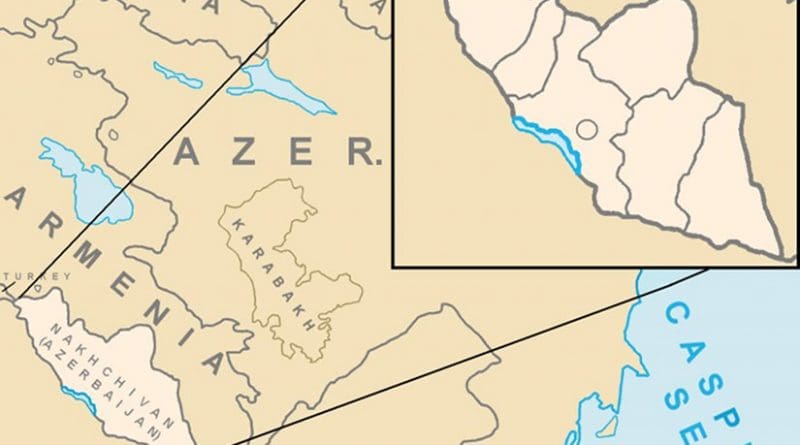Nakhchivan Region: A Living Testimony Of Azerbaijani And World History – OpEd
By Peter Tase
The Nakhchivan Autonomous Republic of Azerbaijan is the birthplace of world renowned architects such as Amiraddin Masud Nakhchivani, as well as a world renowned region of many archeological and cultural monuments that embody a special importance in the ancient history of the World and Azerbaijani nation.
Amiraddin Masud Nakhchivani was a XII Century influential architect of Azerbaijan who lived in the palace of Eldanizlar in Nakhchivan. As an architect and scholar, Masud, pursued the perfection of the Ajami architectural style and played a fundamental role in the strengthening of religious, cultural and memorial architecture of Nakhchivan. His contributions have made a great impact in the Caucasus region and have been adopted by many other architects during the course of the XIV-XVI centuries. The monuments build by Masud are used as an important reference as well as influential objects of study by many other international scholars of culture and archeologists.
Nakhchivan is also home of Farhad House, an archeological monument located in Batabat Summer Grazing valley, to the East of Bichanak Village, in the region of Shahbuz. It is located at the right side of the Nakhchivan – Lachin – Yevlakh main highway, in about one mile to the East from Zorbulag.
The Farhad House has four rooms cut by a hack typed metal tool in an native rock. They are connected with a straight passage that has only one direction. The ceilings are spanned and shaped in very unique forms; the floors have an oval shape. Little stands were carved on the walls in order to install lamps or candles. Along the walls a pavement was built and a fire place was built at the right side of the first room. According to the “Encyclopedia of Nakhchivan Monuments”: “the height of its entrance door is over 2.2 meters; its width is 1.3 meters; a man with a long hair is carved in the rock surface to the right side of the entrance, meanwhile in the left is pictured a woman engraving on the rock.”
Based on a study conducted by the scholars of Nakhchivan Academy of Sciences, Farhad House has “a pavement of two meters in height, 5 meters in length, 80 cm in width, 30 cm in depth. The route from the city of Nakhchivan to Farhad House was an important segment of the medieval commercial routs in the region, which connected Europe with the Central and Eastern Asia. There was built an important transit station in Batabat summer valleys, where a large number of international visitors and scholars have been able to further appreciate and study such an important asset of Azerbaijani Culture, and a series of rare archeological monument. This location has been called by the local population as the Shah Abbas convoy station. The recent investigations conducted by international expeditions and local scientists have given us confidence to confirm that Farhad House was built at the end of the First Millennium B. C.; meanwhile the locals have inherited many mythological stories about Farhad House.
Another location with unique features is the Haggikhlig Necropolis , with significant archeological treasures; built on the II Millennium B.C. on the lefts banks of Kuluschay, near the village of Kulus, in Shahbuz region. This majestic monument is situated at the top of a hill, surrounded by high mountains from the North East and South East it also consists of square stone graves. In Haggikhlig, research and excavations have begun in early 1990, as a result many new discoveries have emerged and this location has proved to be an important treasure of humanity’s cultural assets.
According to the Nakhchivan Monuments Encyclopedia, in Haggikhlig, there have been discovered “Human skeleton remnants, drawings of animal and bird figures and pieces of pink and grey color clay tableware.” According to Professor Novruzlu A. I., there were discovered “a bronze dagger, agricultural items with arrow point, animal bones, and plenty of precious globes, bracelets, ear rings, bronze ring and scaled hooks (designed with scrapes and crossing) pots, bowls, glass and mug shaped clay tableware.”
Heydar Aliyev, the National Leader of the People of Azerbaijan, was absolutely correct when he once stated that: “[in] the territory of Nakhchivan, there exist historical – architectural monuments that have a world – wide scale importance…each of them is a monument reflecting the history, culture and customs of Azerbaijani people, before the world. Each stone and rock of Nakhchivan has a peculiar role in the political, economic, cultural and scientific life of Azerbaijan as a living witness of history.”


Great article on history and archaeology of Nakhchivan